From the Editor - July 1st, 2015
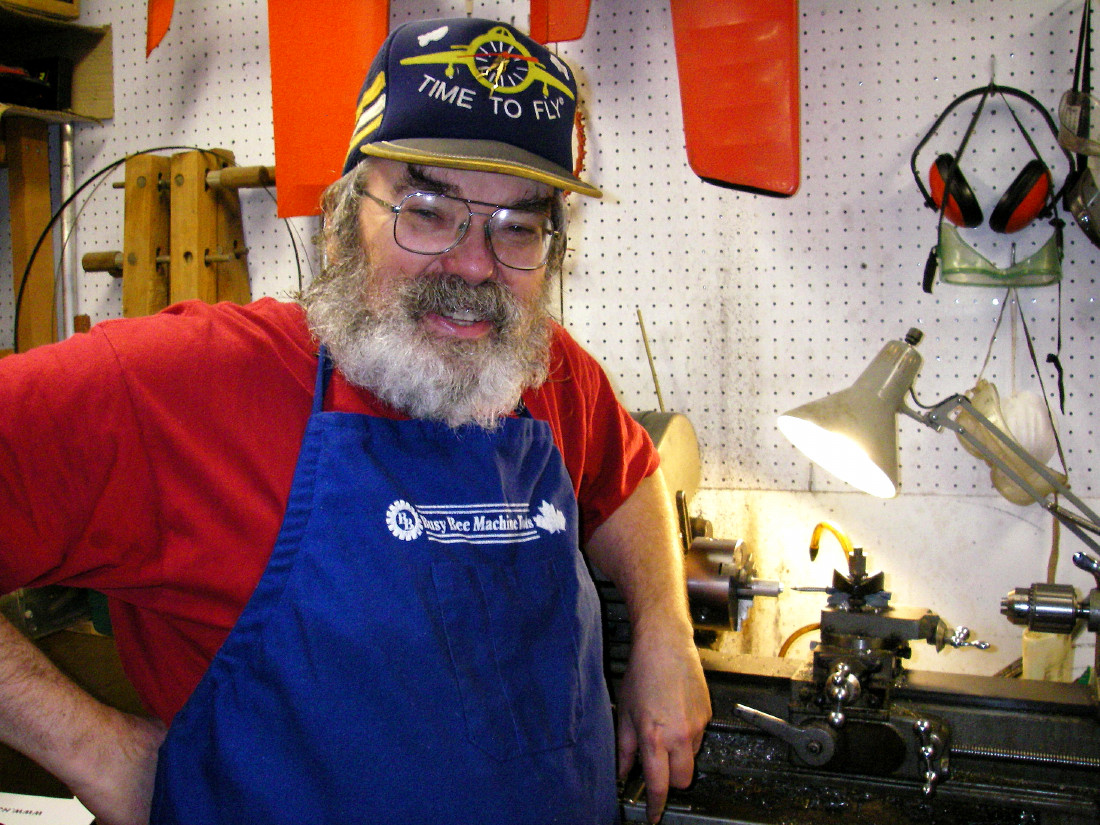 Well, July is here once more, and boy is it a hot one up here in the not-so-frozen North! What with the record-breaking temperatures that we've been experiencing coupled with situations like the California drought (a situation at which we too now find ourselves staring in supposedly water-rich Western Canada) and the unprecedented rate at which the Polar ice and the world's glaciers are now melting, even the most reactionary nay-sayer is now hard-pressed to deny the reality of climate change and our collective role in bringing it about. Let's hope for the sake of generations to come that we can find the collective will to respond appropriately. The recent commitment by participants at the G7 summit would be a good start if they actually follow through.
Well, July is here once more, and boy is it a hot one up here in the not-so-frozen North! What with the record-breaking temperatures that we've been experiencing coupled with situations like the California drought (a situation at which we too now find ourselves staring in supposedly water-rich Western Canada) and the unprecedented rate at which the Polar ice and the world's glaciers are now melting, even the most reactionary nay-sayer is now hard-pressed to deny the reality of climate change and our collective role in bringing it about. Let's hope for the sake of generations to come that we can find the collective will to respond appropriately. The recent commitment by participants at the G7 summit would be a good start if they actually follow through.
On a far happier note, the business of collecting, researching, testing and using the model engines that we love goes on. I've laid off the testing bit for the most part at present, since no engine will give its best in ambient temperatures like those that we're currently experiencing. However, the other activities continue without interruption. In that context, it's been a busy month!
First, a very welcome contact came from my good friend Tim Dannels of the "Engine Collectors' Journal" (ECJ). Tim writes that he is about to advertise Volume 2 of his indespensable "American Model Engine Encyclopedia" (AMEE) on an advance-order basis. The price of this very welcome update of an established reference (which brings the story up to 2015) will be $60.00 - a great value considering the amount of work involved as well as the treasure trove of authoritative information included. The best news is that if ordered and paid for before September 1st, 2015 it will be shipped postage free. My order has already gone in, along with my renewal of my subscription to ECJ!
After September 1st, 2015, the usual $6.50 postage rate will be applied (US rate). Delivery will commence or before September 1st, 2015. I can't over-stress how valuable a work this really is! If you have any interest at all in American model engines, you can't afford not to have a copy at hand. You can order any of Tim's fine publications through the above web-site link. Efforts such as Tim's are fully deserving of support from the model engine community.
While Tim has been finalizing Volume 2 of AMEE, I've continued to chip away at a few remaining housekeeping issues on the site, including the correction of some linkage omissions and formatting problems in the various articles. This effort has uncovered a hitherto unrecognized aspect of the fallout from Ron Chernich's tragic illness which took our friend away from us. This was the fact that during his final months Ron was understandably unable to keep up with the houskeeping on his "Model Engine News" (MEN) site, the result being that a number of engine articles never found their way into the Finder, which was (and is) Ron's index of engines covered on his site. In such cases, the only way you'll ever ever know that those articles are there is if you happen to stumble across the issue of MEN in which they appeared. I only know that they exist because I remember writing and submitting them!
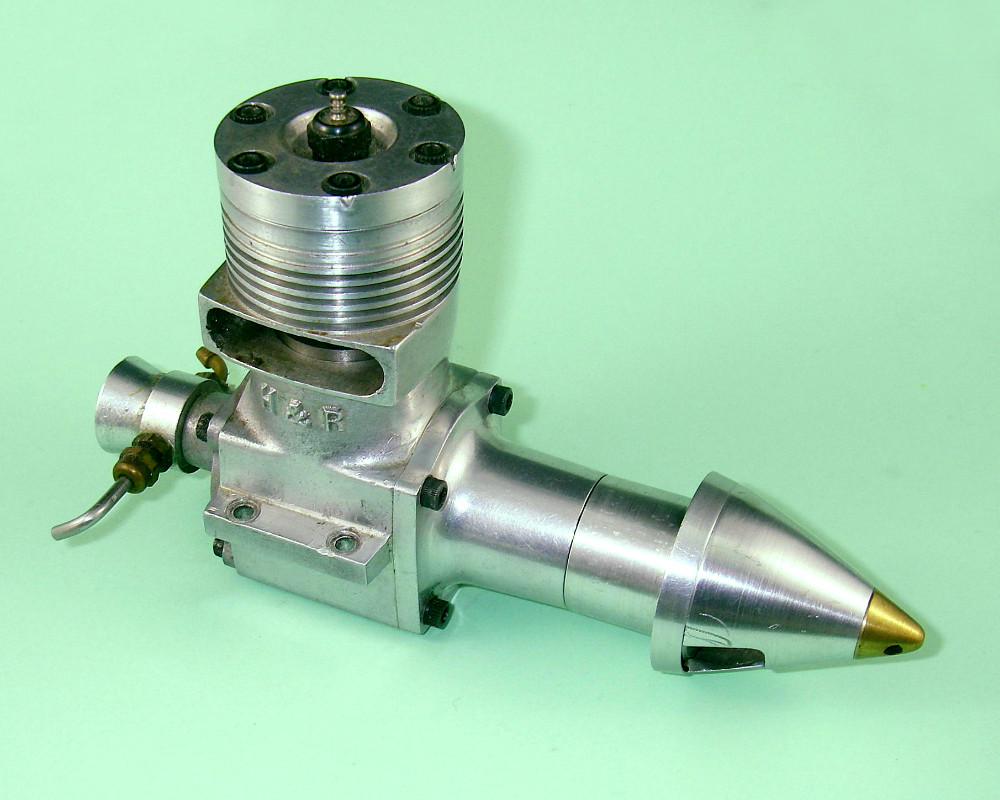 One such article was my write-up of the fascinating H&R Rattler story as related to me by Luke Roy. That is far too interesting a story to lose! I've added that engine to my GALLERY series, from which you can access the article directly. Hopefully this will bring it back to life! I'm sure that there are some other articles which are similarly "lost", and I plan to keep on looking for them. I've also added a few more titles to the PUBLICATIONS page while also cleaning up the presentation of the SOURCES page and adding a few more entries there as well.
One such article was my write-up of the fascinating H&R Rattler story as related to me by Luke Roy. That is far too interesting a story to lose! I've added that engine to my GALLERY series, from which you can access the article directly. Hopefully this will bring it back to life! I'm sure that there are some other articles which are similarly "lost", and I plan to keep on looking for them. I've also added a few more titles to the PUBLICATIONS page while also cleaning up the presentation of the SOURCES page and adding a few more entries there as well.
But this is not all!! I've also been working hard on getting the GALLERY completely up to date to the point where it reflects all of my work to date. During the course of this effort, I was frankly amazed to find that the GALLERY now has a total of well over 90 individual entries, with many more yet to come. Since each of these entries includes a link to an in-depth article that I've written (with the sole exception of Maris Dislers' fine piece on the Taipan 40), this exercise served as a sobering reminder of the sheer number of articles that I've now written without realizing that I was creating such a large body of work! I honestly had no idea of the sheer volume of material that has now flowed off my keyboard during the past eight years, both here and on MEN. I just tackle each article as a single piece of work without having any consciousness (until now!) of the accumulation of information which these articles now represent. I'm really glad that the feedback from readers continues to be overwhelmingly positive - makes all that effort worthwhile!
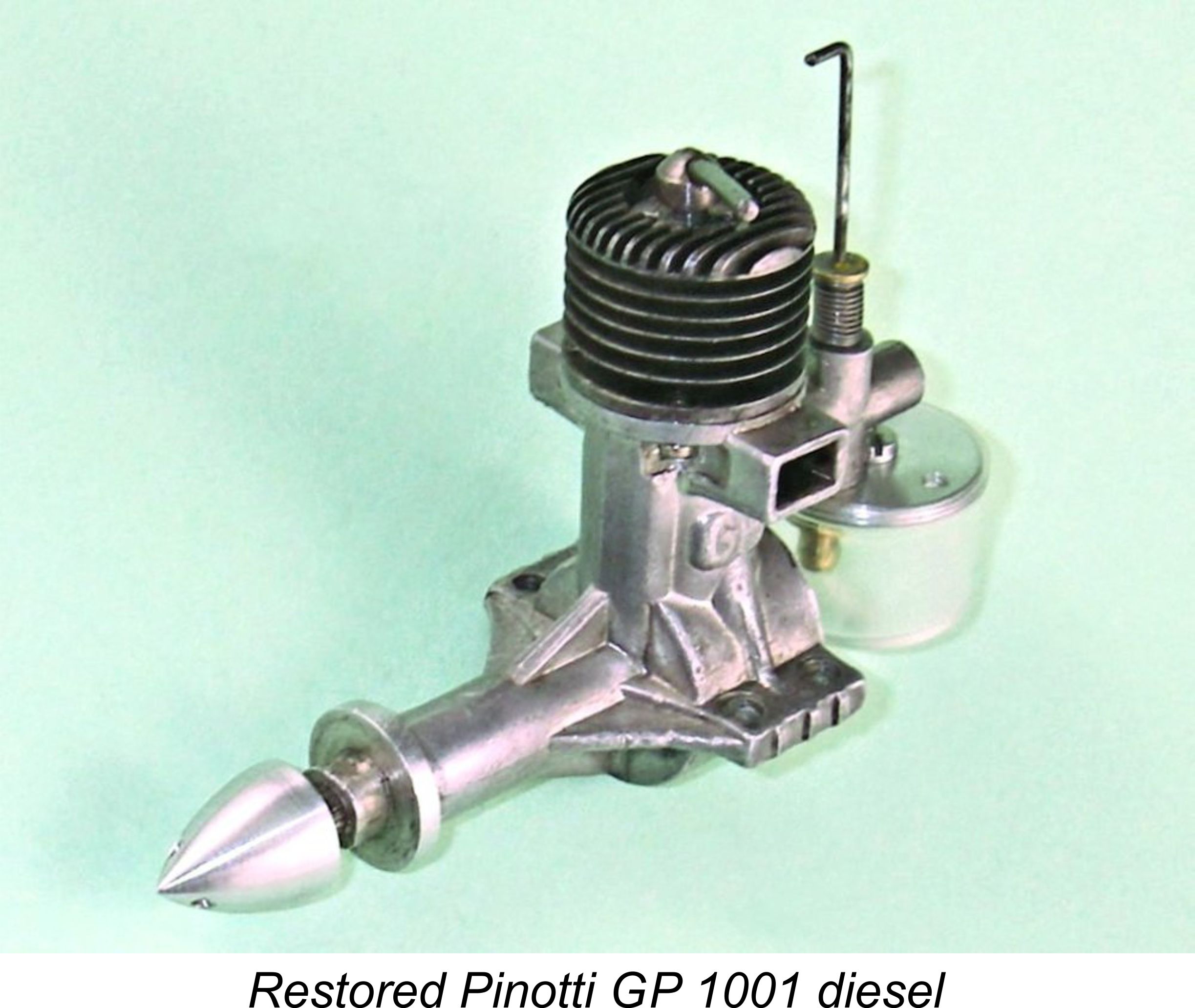 On the subject of feedback, over the past month the receipt of information from my highly valued readers has continued unabated. I heard from Maris Dislers of Australia regarding the Davies-Charlton story; Bob Allan, also from Australia, on the subject of the David-Andersen engines; Lars Gustafsson and Kjell Lindqvist of Sweden with an important correction to last month's Pinotti article (there was a 1.5 cc version of the GP 1001!), Ross Purdy of New Zealand regarding my CS update in last month's Editorial; Kevin Richards with respect to the piece on the early FROG models; and Maris Dislers again regarding the Barbini article (we now have an image of the Barbini 10 cc R/C model). The information provided by these individuals has all been incorporated into the respective articles, with my very sincere thanks. It would be difficult to overstate the value of such additional information from better-informed individuals in terms of enhancing the authoritativeness of my work. Thanks to one and all!!
On the subject of feedback, over the past month the receipt of information from my highly valued readers has continued unabated. I heard from Maris Dislers of Australia regarding the Davies-Charlton story; Bob Allan, also from Australia, on the subject of the David-Andersen engines; Lars Gustafsson and Kjell Lindqvist of Sweden with an important correction to last month's Pinotti article (there was a 1.5 cc version of the GP 1001!), Ross Purdy of New Zealand regarding my CS update in last month's Editorial; Kevin Richards with respect to the piece on the early FROG models; and Maris Dislers again regarding the Barbini article (we now have an image of the Barbini 10 cc R/C model). The information provided by these individuals has all been incorporated into the respective articles, with my very sincere thanks. It would be difficult to overstate the value of such additional information from better-informed individuals in terms of enhancing the authoritativeness of my work. Thanks to one and all!!
For me, this happy situation serves as a reminder of what a vibrant and enthusiastic international community we are fortunate enough to be part of as members of the worldwide ranks of model engine enthusiasts. The task of recording model engine history could never be undertaken by any one individual working alone, and I feel immensely privileged to have access to the wealth of knowledge which is collectively held by the world's model engine aficionados. Thanks again to one and all - together, we're making progress!
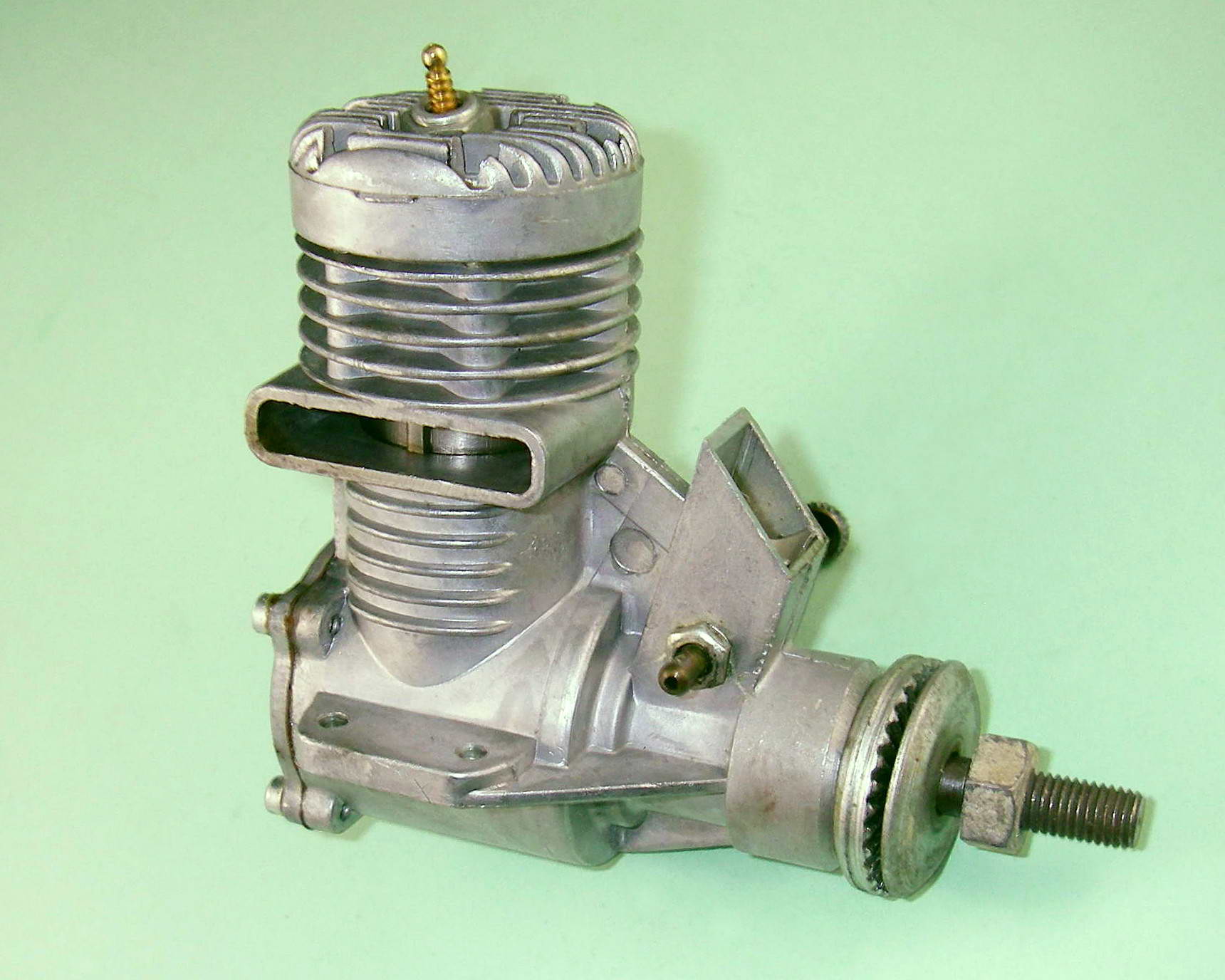 Ever since the mid 2014 departure of the Fox Mfg. Co. from the ranks of active model engine manufacturers, I've been maintaining a watching brief on the status of the various long-standing model engine manufacturers who are still active. As discussed in last month's Editiorial, the sweeping adoption of (to me at least) completely soul-less brushless electric model powerplants has caused a massive restructuring of the model I/C engine manufacturing field. While a niche or "novelty" market will doubtless continue for years to come (let's face it, diesels have been been a niche market for 40 years now!), the days of large-scale model I/C engine manufacturing appear to be drawing to a close. The future now belongs to the small-scale specialist manuacturers who are able to survive on the basis of participation in a relatively small niche market.
Ever since the mid 2014 departure of the Fox Mfg. Co. from the ranks of active model engine manufacturers, I've been maintaining a watching brief on the status of the various long-standing model engine manufacturers who are still active. As discussed in last month's Editiorial, the sweeping adoption of (to me at least) completely soul-less brushless electric model powerplants has caused a massive restructuring of the model I/C engine manufacturing field. While a niche or "novelty" market will doubtless continue for years to come (let's face it, diesels have been been a niche market for 40 years now!), the days of large-scale model I/C engine manufacturing appear to be drawing to a close. The future now belongs to the small-scale specialist manuacturers who are able to survive on the basis of participation in a relatively small niche market.
This has made me extremely sensitive to the slightest sign that all may not be well with some of our best-loved surviving major producers. As an example, we are still awaiting renewed signs of life from Enya despite the April 2015 assurances of Ken Enya that manufacture of that fine range of engines will be resumed.
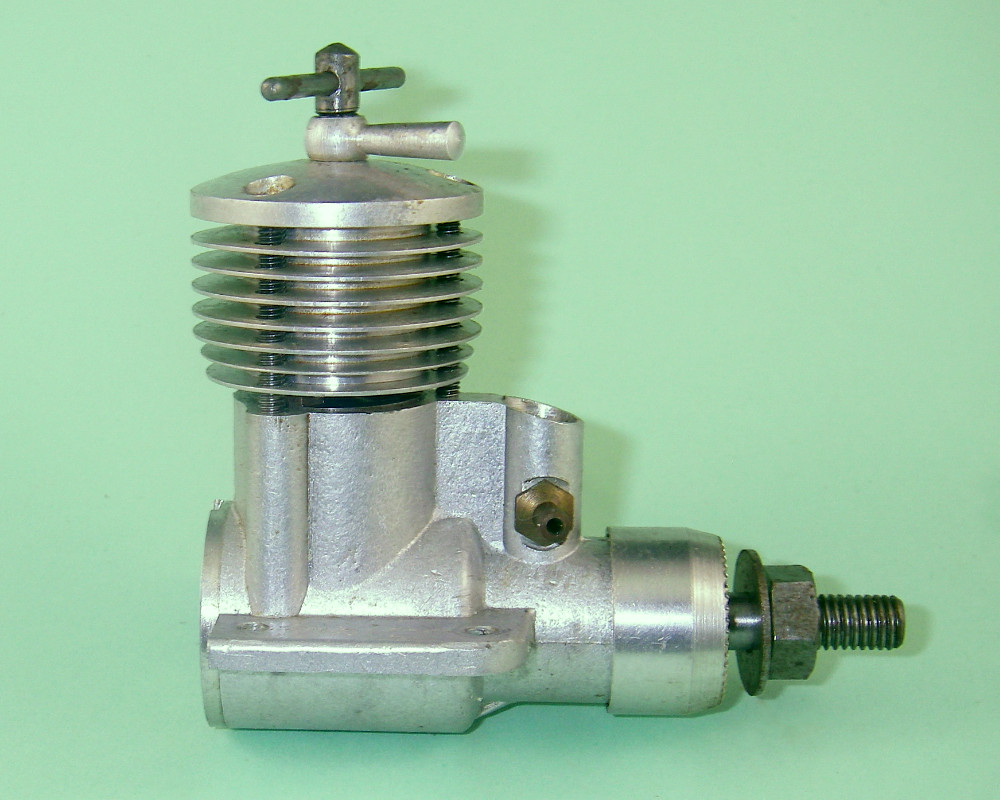 The latest marque to end up on my check-up list is Progress Aero Works (better known as just plain PAW) of Macclesfield in England. Although the range continues to be advertised periodically in "AeroModeller" magazine, a recent check-up of the official PAW web-site revealed that the site has not been updated since January 2014. Not only that, but a number of popular models, including the various 2.5 cc (.15 cuin.) designs, are not included. Feeling that this boded no good, I contacted Tony Eifflaender, with whom I have had very cordial dealings in the past. Tony assured me that although the web-site had admittedly not been kept up to date, all models (including the 2.5 cc engines) remain available at prices which are unchanged from their May 2012 levels. I gather that PAW is now very active in other fields, including the manufacture of precision components for Formula One race cars, and that model engine manufacture is a bit of a sideline these days. However, for now at least the PAW range remains available, although no new models appear to be planned and model engine production is presumably tailored strictly to meet demand.
The latest marque to end up on my check-up list is Progress Aero Works (better known as just plain PAW) of Macclesfield in England. Although the range continues to be advertised periodically in "AeroModeller" magazine, a recent check-up of the official PAW web-site revealed that the site has not been updated since January 2014. Not only that, but a number of popular models, including the various 2.5 cc (.15 cuin.) designs, are not included. Feeling that this boded no good, I contacted Tony Eifflaender, with whom I have had very cordial dealings in the past. Tony assured me that although the web-site had admittedly not been kept up to date, all models (including the 2.5 cc engines) remain available at prices which are unchanged from their May 2012 levels. I gather that PAW is now very active in other fields, including the manufacture of precision components for Formula One race cars, and that model engine manufacture is a bit of a sideline these days. However, for now at least the PAW range remains available, although no new models appear to be planned and model engine production is presumably tailored strictly to meet demand.
This is very welcome news for me personally. I got my first PAW engine (a brand new 2.49 Mk. III, which I still have) in 1961 and have been a die-hard PAW user ever since. I've always found them to be light, tough and dependable units having very acceptable levels of performance. The company has stood behind their products as well, with an outstanding spares and repair service which puts some others to shame. As Bob Allan very aptly said in his tribute to PAW which appeared in 2006 on MEN:
"In my opinion at least, the PAW comes closest to earning the tag of "the definitive model diesel engine". If nobody had yet designed a diesel model aero engine, and the design brief was to come up with a unit that was powerful, tough and reliable, yet light in weight, easy to handle and lasted forever - well, you would probably end up with a drawing of a PAW!"
I couldn't agree more! Long may the PAW engines continue to give pleasure to model diesel fans worldwide! Given the fact that the web-site is not up to date, anyone wanting to buy one of these fine products would best be advised to contact Tony or Paul Eifflaender directly by email at wendy@eifflaender.com
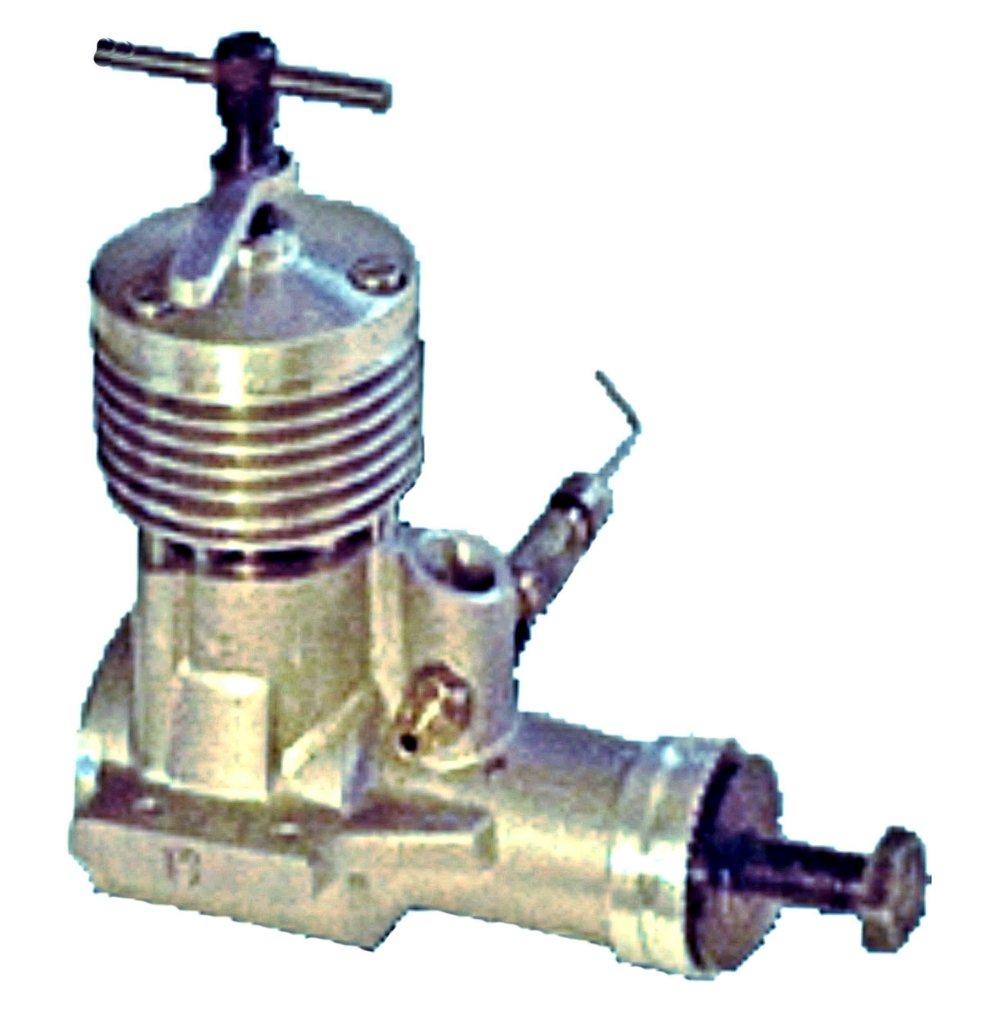 Sorting out the PAW situation put me in mind of the Sharma range of model engines which have been manufactured since 1974 in Jodhpur, India. These unpretentious but very well-made engines are undeniably based very closely upon the above-mentioned PAW designs which originated in the 1950's. I've been using them myself since the mid-1990's, having been one of the first North American residents to do so on a regular basis. Many of my club-mates and fellow competitors subsequently followed my lead with complete satisfaction.
Sorting out the PAW situation put me in mind of the Sharma range of model engines which have been manufactured since 1974 in Jodhpur, India. These unpretentious but very well-made engines are undeniably based very closely upon the above-mentioned PAW designs which originated in the 1950's. I've been using them myself since the mid-1990's, having been one of the first North American residents to do so on a regular basis. Many of my club-mates and fellow competitors subsequently followed my lead with complete satisfaction.
I recently contacted Vivek Sharma to ascertain the current status of the range. The news was good! Although production of the Sharma glow-plug models has been suspended for now at least, the diesel models remain available as of mid 2015 in .09, .15 and .19 cuin. displacements. Both C/L and R/C models are offered. Prices are very reasonable for what you get, which is a no-frills but very well-made engine having an excellent performance by "classic" model diesel standards.
But there was even better news than this! It turns out that Vivek is an enthusiastic reader of this web-site! When I broached the possibility of my doing an article summarizing the history of the Sharma marque and including some tests of the current models, he expressed himself as being delighted to assist in every way possible. Accordingly, readers may expect to see a detailed article on the Sharma engines appear on this site in the not-too-distant future. As a start, I've added the Sharma web-site to my SOURCES page.
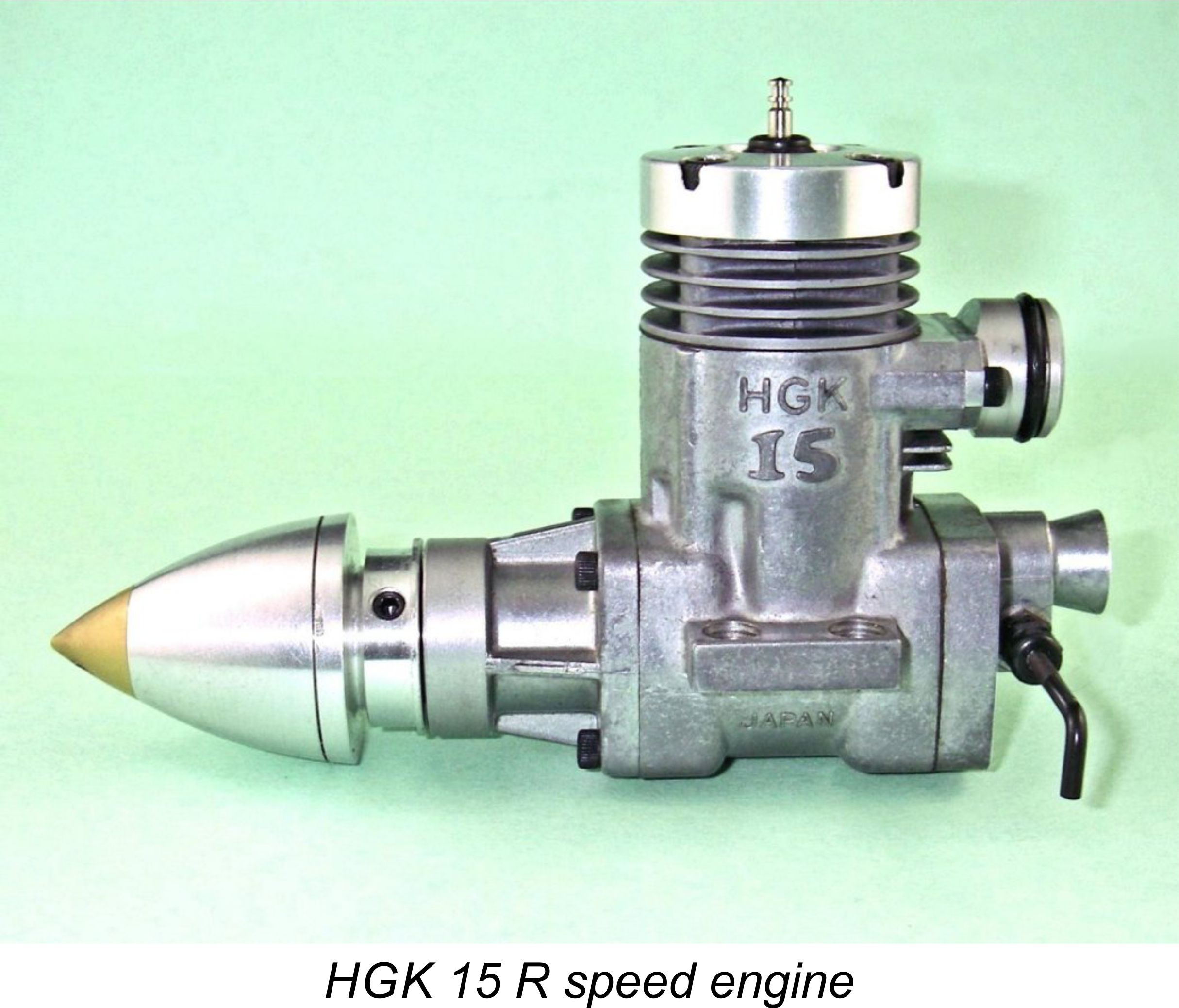 Turning now to this month's feature article, we move up into the post-classic era for the first-ever in-depth look in the English language at one of the more obscure model engine ranges to emerge from Japan during that era - the HGK marque. Originating in 1974, this short-lived series of high-quality model engines was notable in being the first commercial range to employ the then-new AAC (aluminium/aluminium/chrome) piston/cylinder technology. My very sincere thanks are extended to my mate Maris Dislers for his very considerable assistance in pulling this story together.
Turning now to this month's feature article, we move up into the post-classic era for the first-ever in-depth look in the English language at one of the more obscure model engine ranges to emerge from Japan during that era - the HGK marque. Originating in 1974, this short-lived series of high-quality model engines was notable in being the first commercial range to employ the then-new AAC (aluminium/aluminium/chrome) piston/cylinder technology. My very sincere thanks are extended to my mate Maris Dislers for his very considerable assistance in pulling this story together.
Although the engines were very well-designed, also being manufactured to extremely high standards, their performance was limited by a few basic departures from the range of tolerances which later experimentation showed to be ideal for AAC engines. In a sense, they were victims of their own priority in being first in the field with new technology at a time when that technology was still not fully understood. This explains their relatively brief marketplace tenure. Nontheless, it's an interesting story, the tracking of which was unusually challenging due to a shortage of accessible source material in the English language. I hope that you enjoy it!
The Technical Topic this time is a summary of the various approaches which are available to deal with the tricky issue of magnesium casting cleaning and preservation. As any owner of a mag case engine knows, that material has an overwhelming tendency to try to return to its natural mineral state! Constant vigilance is required to prevent this from happening. In addition to sharing my own experience of this issue, I've also been able to summarize the experiences of a number of friends and colleagues who face similar challenges with their own collections. My thanks go out to all of my contributors, with a special acnowledgement to Jerry Turnbaugh of Pasco, Washington, USA for his kindness in undertaking a detailed Web seach to see what others have suggested in this regard. I hope that some of you find the article useful!
Speaking of magnesium-case engines, for next month I plan to return to Great Britain by presenting a comprehensively revised article summarizing the history of the E.D range. An earlier article on this topic appeared some years ago on MEN, but further information has come to light since then which has necessitated a complete re-write with the assistance of my valued colleagues Kevin Richards and Gordon Cornell. It had been my intention to replace the present MEN article with the revised text, but Ron Chernich's tragic demise and the consequent freezing of the MEN site have precluded this. Time to set the record straight!
I also plan to add a technical article on the care and feeding of model diesels in the harsh environment of everyday use in the field. If you want 'em to last, you have to treat 'em right! There's more to that than many users appear to recognize .........
Sadly, I have to close this month's Editorial on a somewhat less positive note. The past few weeks brought another piece of correspondence which hurt me very much, as it was doubtless intended to do. Same old "too many words" complaint, but now with a new twist - it was suggested that my site is nothing more than a bloated and over-wordy monument to my own ego. Worse, it was further suggested that my mate Ron Chernich concurred with this view of my work when discussing it with others! What have I done to provoke such vitriol ...?!?
I had actually (perhaps naively?!?) believed that my efforts were motivated by a sincere desire to preserve and share the full stories of some classic model engines and manufacturers while the opportunity was there to do so. With the notable exception of my friend Tim Dannels and ECJ, no-one else was stepping up to the plate, and I felt that someone should be taking on the challenge of maintaining an on-line record. I have trouble seeing where ego comes into this....... interest, enthusiasm and dedication are required in buckets, along with a willingness to invest money in the project. But ego ....?!? Believe me, if someone else was doing this, I'd be delighted to have all the time and cash which would be freed up at my disposal for other activities!
I only started this site (with Ron Chernich's full encouragement) because Ron and I both believed very sincerely that the only way to maintain interest in classic model engines, thus encouraging their collection and preservation, is to ensure that there's authoritative and comprehensive information about them that is readily available to all. These days, that means on the Web. No-one's going to collect or preserve items about which there's no documentation! Prior to his tragic demise, Ron and I discussed the concept of my carrying on and agreed that the detailed historical research which we had begun together was well worth continuing. Here are my good mate's own words taken verbatim from his final email to me on this subject:
"Good luck with the web site. Link to MEN pages often and widely. It helps with the Google ranking. Also feel totally free to lift any images or anything else that seems useful. That's why I used a Creative Commons license. I know you will accredit as required because you've always been on top of that one."
I've taken that statement as my marching orders and have complied with Ron's requests as closely as possible all along. I've put more time, money and effort into this venture than most of you would believe! If I was wrong to do so, then I should stop right now - there are many other challenges open to me! Perhaps one of my critics can do better .........I've always liked the concept of "put up or shut up!"
I fully recognize that the level of detail that I provide is doubtless far more than some people want, but how many times do I have to say it - no-one's forcing anyone to read it all, or indeed any of it! If you just want a few paragraphs, go to the GALLERY! Or ignore it completely .........The point is that all of the information is available to be read by anyone who is interested - my readers are free to select which bits to read for themselves. Please take full advantage of that freedom! I just wish that my critics would exercise their freedom to stop visiting this site which they hate so much!!
End of rant ...............and also end of topic. I'm going to ignore any future gripes of this sort and just keep doing what I do as long as the feedback from readers remains generally positive (as it has overwhelmingly done so far), or until someone else takes over the effort at the same level of coverage.
Until next time, take care and keep your fingers out of those props!!
Cheers,
Adrian Duncan
Coquitlam, British Columbia, Canada
 Sorting out the PAW situation put me in mind of the Sharma range of model engines which have been manufactured since 1974 in Jodhpur, India. These unpretentious but very well-made engines are undeniably based very closely upon the above-mentioned PAW designs which originated in the 1950's. I've been using them myself since the mid-1990's, having been one of the first North American residents to do so on a regular basis. Many of my club-mates and fellow competitors subsequently followed my lead with complete satisfaction.
Sorting out the PAW situation put me in mind of the Sharma range of model engines which have been manufactured since 1974 in Jodhpur, India. These unpretentious but very well-made engines are undeniably based very closely upon the above-mentioned PAW designs which originated in the 1950's. I've been using them myself since the mid-1990's, having been one of the first North American residents to do so on a regular basis. Many of my club-mates and fellow competitors subsequently followed my lead with complete satisfaction.  Turning now to this month's feature article, we move up into the post-classic era for the first-ever in-depth look in the English language at one of the more obscure model engine ranges to emerge from Japan during that era - the HGK marque. Originating in 1974, this short-lived series of high-quality model engines was notable in being the first commercial range to employ the then-new AAC (aluminium/aluminium/chrome) piston/cylinder technology. My very sincere thanks are extended to my mate Maris Dislers for his very considerable assistance in pulling this story together.
Turning now to this month's feature article, we move up into the post-classic era for the first-ever in-depth look in the English language at one of the more obscure model engine ranges to emerge from Japan during that era - the HGK marque. Originating in 1974, this short-lived series of high-quality model engines was notable in being the first commercial range to employ the then-new AAC (aluminium/aluminium/chrome) piston/cylinder technology. My very sincere thanks are extended to my mate Maris Dislers for his very considerable assistance in pulling this story together. 
 Well, July is here once more, and boy is it a hot one up here in the not-so-frozen North! What with the record-breaking temperatures that we've been experiencing coupled with situations like the California drought (a situation at which we too now find ourselves staring in supposedly water-rich Western Canada) and the unprecedented rate at which the Polar ice and the world's glaciers are now melting, even the most reactionary nay-sayer is now hard-pressed to deny the reality of climate change and our collective role in bringing it about. Let's hope for the sake of generations to come that we can find the collective will to respond appropriately. The recent commitment by participants at the G7 summit would be a good start if they actually follow through.
Well, July is here once more, and boy is it a hot one up here in the not-so-frozen North! What with the record-breaking temperatures that we've been experiencing coupled with situations like the California drought (a situation at which we too now find ourselves staring in supposedly water-rich Western Canada) and the unprecedented rate at which the Polar ice and the world's glaciers are now melting, even the most reactionary nay-sayer is now hard-pressed to deny the reality of climate change and our collective role in bringing it about. Let's hope for the sake of generations to come that we can find the collective will to respond appropriately. The recent commitment by participants at the G7 summit would be a good start if they actually follow through.  One such article was my write-up of the fascinating
One such article was my write-up of the fascinating  On the subject of feedback, over the past month the receipt of information from my highly valued readers has continued unabated. I heard from Maris Dislers of Australia regarding the
On the subject of feedback, over the past month the receipt of information from my highly valued readers has continued unabated. I heard from Maris Dislers of Australia regarding the  Ever since the mid 2014 departure of the Fox Mfg. Co. from the ranks of active model engine manufacturers, I've been maintaining a watching brief on the status of the various long-standing model engine manufacturers who are still active. As discussed in
Ever since the mid 2014 departure of the Fox Mfg. Co. from the ranks of active model engine manufacturers, I've been maintaining a watching brief on the status of the various long-standing model engine manufacturers who are still active. As discussed in  The latest marque to end up on my check-up list is Progress Aero Works (better known as just plain PAW) of Macclesfield in England. Although the range continues to be advertised periodically in
The latest marque to end up on my check-up list is Progress Aero Works (better known as just plain PAW) of Macclesfield in England. Although the range continues to be advertised periodically in